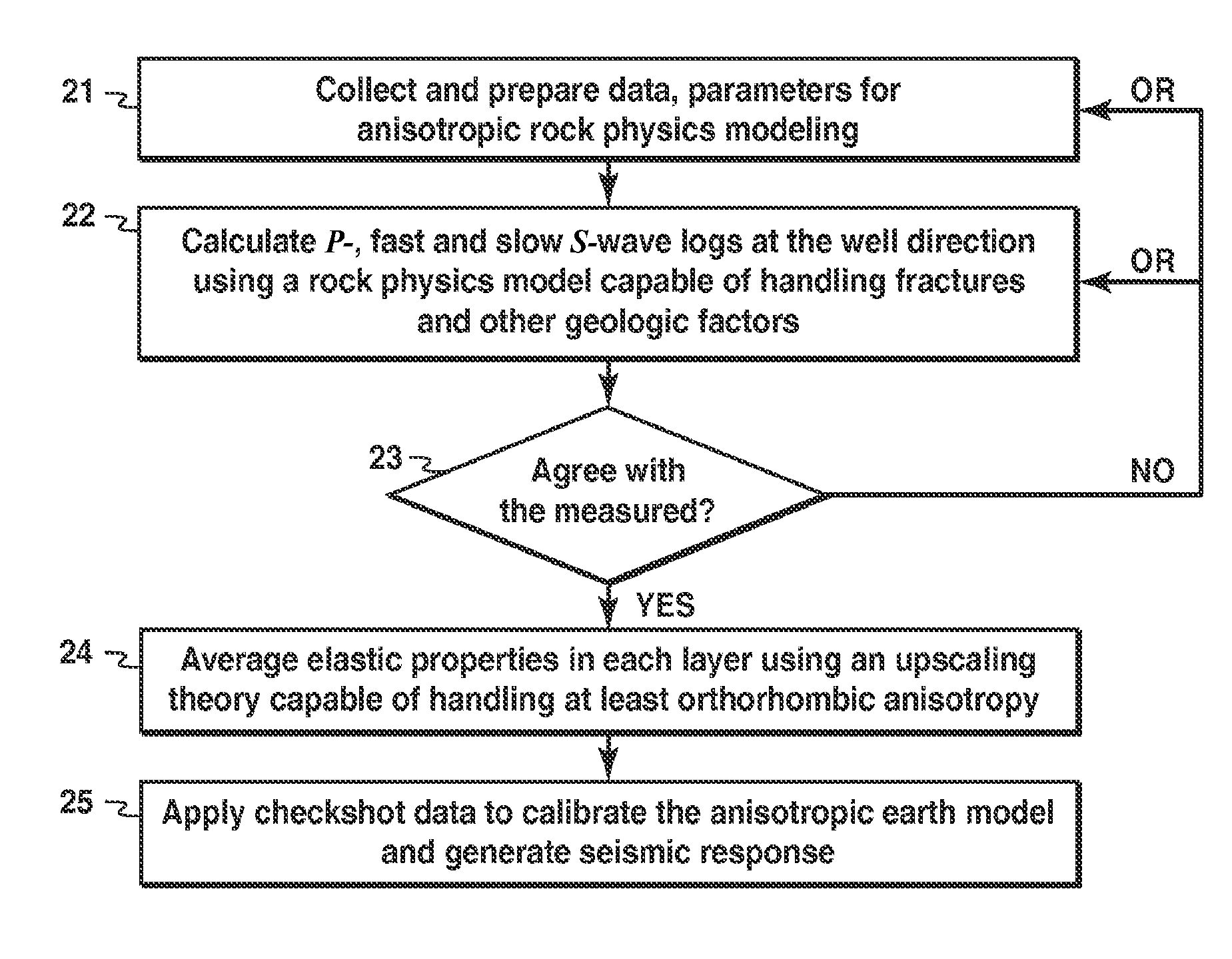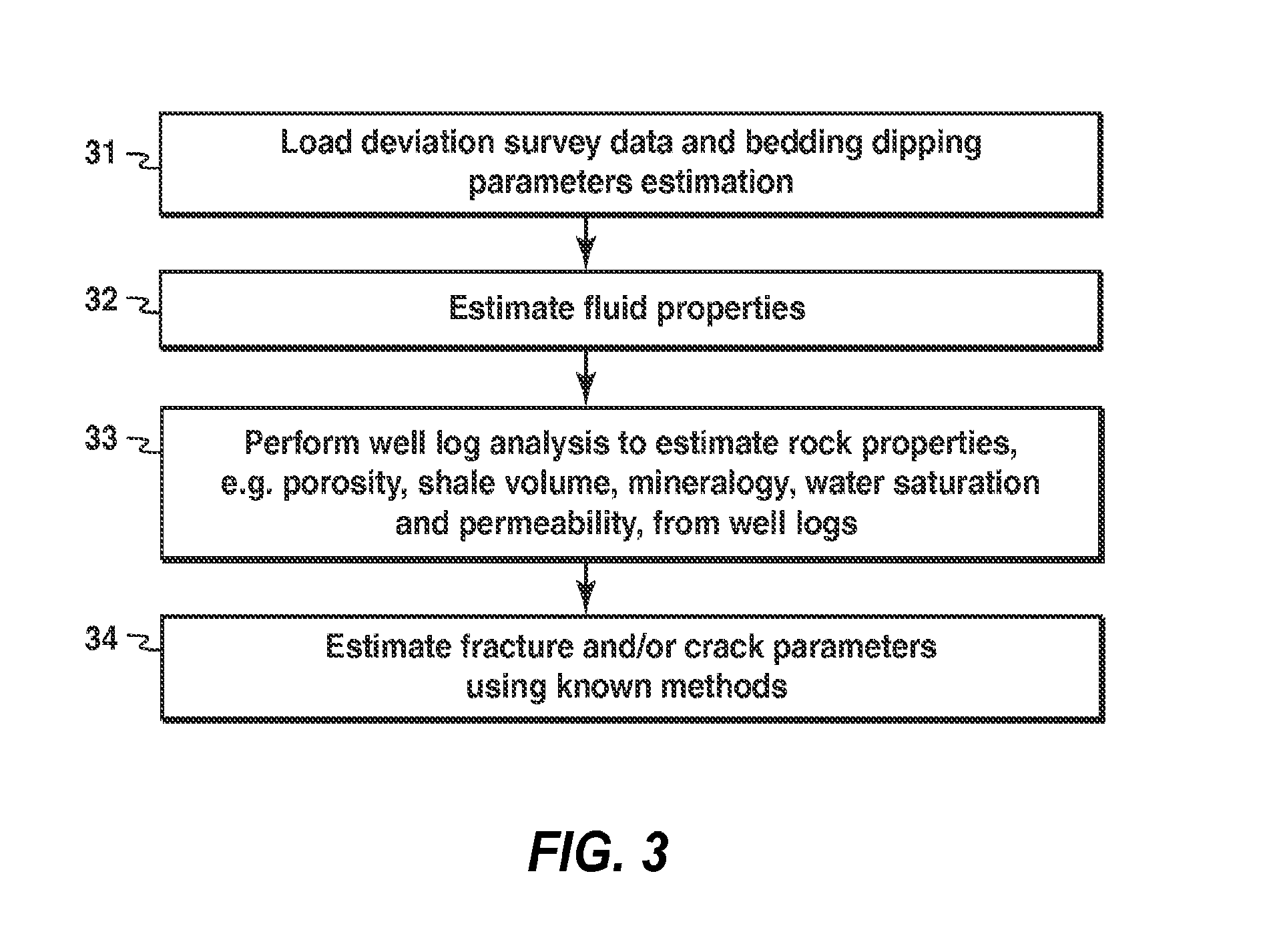Rock physics model for simulating seismic response in layered fractured rocks
a layered fractured rock and seismic response technology, applied in seismology for waterlogging, instruments, analogue processes, etc., can solve the problems of inability to apply real-time applications, models with limitations are hardly useful, and inclusion-based effective medium theories (e.g. dem and sc) have their own problems
- Summary
- Abstract
- Description
- Claims
- Application Information
AI Technical Summary
Benefits of technology
Problems solved by technology
Method used
Image
Examples
examples
[0131]The integrated workflow and the rock physics model of the present invention were used to study the effect of fractures on seismic response at an East Texas well. Two examples showing that the present invention generates suitable elastic constants are presented here. In the first example, a single fracture set is assumed, aligned perpendicular to the x-axis, in a mixed carbonate-clastic environment (see track 71 of FIG. 7, where the shale volume fraction varies greatly with depth). The fracture porosity (track 72) is zero above 3800 ft, where all the calculated anisotropy comes from shale anisotropy. (In tracks 73-75, blue curves are C11, red curves are C22, and green curves are C33.) Thus, C11 and C22, the two quantities plotted on track 73, are the same above 3800 ft. Below 3800 ft, the anisotropy is HTI in clean limestone and VTI in pure shale, and orthorhombic in shaly (muddy) carbonate with vertical fractures. Azimual anisotropy is indicated by the difference between C11 a...
PUM
 Login to View More
Login to View More Abstract
Description
Claims
Application Information
 Login to View More
Login to View More - R&D
- Intellectual Property
- Life Sciences
- Materials
- Tech Scout
- Unparalleled Data Quality
- Higher Quality Content
- 60% Fewer Hallucinations
Browse by: Latest US Patents, China's latest patents, Technical Efficacy Thesaurus, Application Domain, Technology Topic, Popular Technical Reports.
© 2025 PatSnap. All rights reserved.Legal|Privacy policy|Modern Slavery Act Transparency Statement|Sitemap|About US| Contact US: help@patsnap.com



